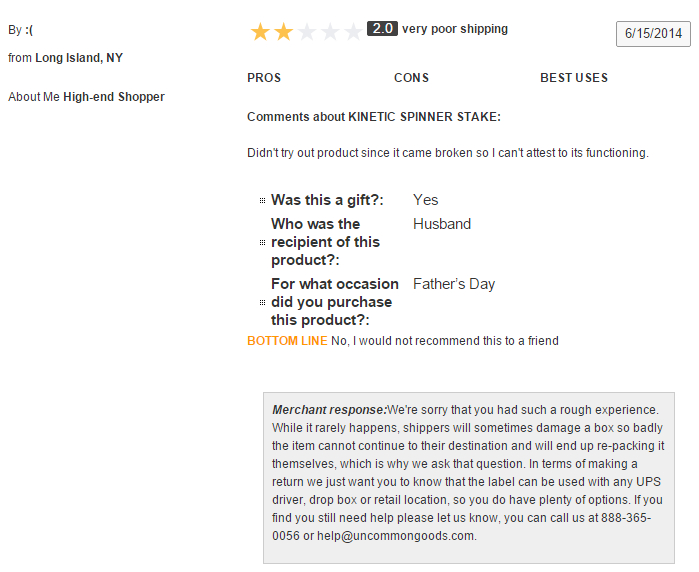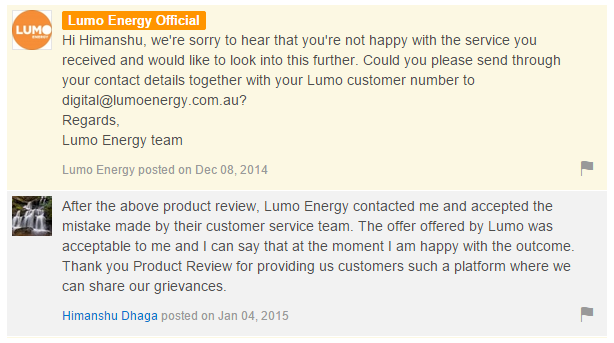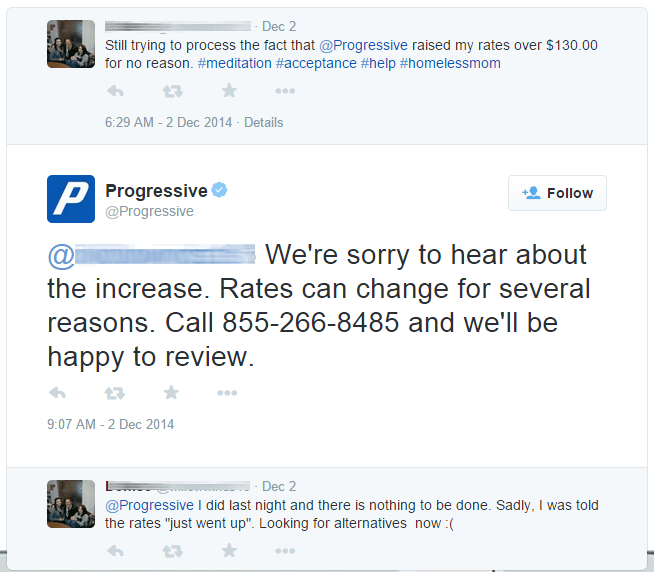-
 8 min. read
8 min. read
-
 WebFX Team
WebFX Team Digital Marketing Agency
Digital Marketing Agency
- The WebFX team is made up of more than 450 subject matter experts in digital marketing, SEO, web design and web development, social media, and more. Together, they’ve helped WebFX’s clients earn more than $3 billion in revenue from the web — and that’s just in the past five years. @webfx
Every business and website is bound to get a bad review at some time or another. It’s kind of unavoidable when you consider how easy it is for customers to submit their feedback online. A bad review doesn’t mean that your product or service has entirely failed your customers.
For all you know, the reviewer may have simply had a bad day and used a moment’s lag on your website as an opportunity to rant. However, the trap that many business and website owners fall into is that of badreviewaphobia (note: not a real medical term). That is to say, some of us can become so upset by a negative review, and so concerned about making the situation worse, that we prefer to do nothing at all.
This can be especially true of businesses that don’t typically get bad reviews.
But you can best handle these negative reviews by addressing them head-on. By responding to bad reviews, you show other potential customers that you are willing to address and resolve concerns. Doing so may also help assure potential customers that the negative thing they’ve read about online is something that doesn’t happen often.
Let’s dive into the real meat of dealing with bad reviews. We’ll start by gaining a better understanding of why customers leave them in the first place.
Video: Online Review Management
Why customers write negative reviews
Your customers might leave a bad review for many reasons. Maybe they had a bad experience on your website, received a damaged product, or had a customer service experience that was less than stellar.
In terms of their experiences as customers, people today are 58% more likely to share their opinions as compared to five years ago.
However, 95% of those people are sharing negative experiences. What this tells us is that having a negative customer experience is a much stronger motivator for people to leave a review than a positive one. If they have a good experience and everything goes as planned, they likely think nothing of it. But a bad experience drives them to action because they take it personally.
Something about your product or service has negatively affected their day. They want you to know about it and (hopefully) make it better. But, after learning about your customer’s negative experience, what should you do about it?
Why you should respond to bad reviews
It can be somewhat daunting to read a bad review of the business or product you’ve put so much of your time and energy into creating.
But appropriately responding to such reviews is very important for how that product, or even your company, are perceived in the future. While your gut instinct to reading a bad review might be to ignore it completely, or to respond to it with your own tongue-in-cheek remarks, the best thing you can do to handle a bad review is to address it quickly and politely. If you decide that you should respond to a negative review, there are a surprising number of benefits to you.
Negative reviews can be good for you (sort of)
For example, one study from the Journal of Consumer Research showed that negative reviews can actually be good for your business…
to some extent. Reviewers who leave negative but fair reviews of your product or service can actually improve how potential customers view your brand. Polite negative reviews that use phrases like “I’ll be honest…” and “I don’t want to be mean, but…” can actually make your brand seem more legitimate, even when compared to brands with zero negative reviews. By responding to such reviews, you can take these sentiments a step further.
A response will show that even though the customer might not be mad, you care about addressing their issues anyway.
Reviews are extremely valuable
A 2019 survey of over 1,000 North American consumers revealed that 76% of consumers find online reviews as trustworthy as personal recommendations. So if you want your future customers to have the right knowledge about your product and brand, it’s best to nip negative reviews in the bud. Aside from appearing more accessible and human to your potential customers, responding to negative reviews can also help you squash any misunderstandings about your product or service.
If a customer leaves a bad review of your product, but you catch on to the fact that the customer didn’t use the product correctly, it’s important that you respond to the review with this information. Not only will a polite and helpful comment likely cause that customer to re-evaluate your product, but it will keep other customers from making the same mistake in the future. If you’ve just about gotten over your badreviewaphobia, your next endeavor might be to seek out some methods for responding to negative reviews.
No worries — we have some thoughts on that, too.
How to respond to negative reviews
Let me take a second to point out that reviews show up all over the internet, not just on review sites. If someone says they’re having problems with your brand or service on a social media site, in a blog comment, or in the buyer feedback section of your website, you need to understand that these are all forms of reviews that your team should address. No matter the medium, there are a few rules that you can follow to best respond to the negative feedback you receive.
Do apologize
Apologize for whatever went wrong.
You should apologize, even if the experience had nothing to do with your company itself. First and foremost, what the customer wants is an apology for what they view as a bad experience — they don’t care about the technicalities. Check out this review from UncommonGoods, where the seller begins with an apology for a customer’s shipping-damaged goods: 
Do offer an explanation
Simply saying “sorry that happened” won’t do much to resolve the issue that caused your customer to leave a bad review in the first place.
Your customers want to know why something didn’t work the way they expected, why a service took too long, or why better customer service wasn’t provided to them. One of the best things you can do to clear the air is explain what happened.
For example, check out this sightseeing company’s review response on TripAdvisor. (Note: the company clearly meant to say “didn’t” in the first sentence.
Take this as a lesson to watch your spelling in your review responses, too.)  You can also take this a step further by explaining how you’re going to prevent the same mistake from happening again in the future. That shows you’re proactive, not to mention serious about permanently resolving common customer problems.
You can also take this a step further by explaining how you’re going to prevent the same mistake from happening again in the future. That shows you’re proactive, not to mention serious about permanently resolving common customer problems.
Do provide an immediate resolution
After you’ve acknowledged the customer’s complaint, offer an immediate and actionable option they can use to better resolve the issue. This might mean offering a phone number or email address to one of your best customer service reps, or it could be something like a coupon code, free product, or partial refund.
If you act immediately and see your resolution through to the end, customers are also more likely to update their negative reviews with something nicer.
Take a look at this customer’s re-review from ProductReview.com: 
Don’t be unoriginal or follow a script
You see this all the time. Customers leave negative feedback, and a brand’s way of dealing with it sounds like something that’s been copied from a million other negative review threads. Not to call out Progressive, but here’s an example straight out of the “how to reply to negative tweets” handbook:  Don’t be that guy.
Don’t be that guy.
As this customer’s car insurance provider, Progressive shouldn’t be trying to say that they are just now hearing about the increase in their customer’s rates.
Thus, their apology comes off as unauthentic and ingenuine. To make matters worse, their immediate action resource is quickly proven ineffective.
Offer unique, unscripted, genuinely helpful responses to negative reviews that truly help your customers. Both your current and future customers will think a lot more of you for it.
Navigating the world of bad reviews and unhappy customers is, well, not a happy activity. But by handling your brand’s negative reviews in a responsible and engaging way, you can not only make sure that some of your unhappy customers become happy customers once again, but also that future customers feel more drawn to your brand. What are your go-to tips for dealing with negative reviews?
Share them in the comments section below!
-
 The WebFX team is made up of more than 450 subject matter experts in digital marketing, SEO, web design and web development, social media, and more. Together, they’ve helped WebFX’s clients earn more than $3 billion in revenue from the web — and that’s just in the past five years.@webfx
The WebFX team is made up of more than 450 subject matter experts in digital marketing, SEO, web design and web development, social media, and more. Together, they’ve helped WebFX’s clients earn more than $3 billion in revenue from the web — and that’s just in the past five years.@webfx -

WebFX is a full-service marketing agency with 1,100+ client reviews and a 4.9-star rating on Clutch! Find out how our expert team and revenue-accelerating tech can drive results for you! Learn more
Try our free Marketing Calculator
Craft a tailored online marketing strategy! Utilize our free Internet marketing calculator for a custom plan based on your location, reach, timeframe, and budget.
Plan Your Marketing Budget

Maximize Your Marketing ROI
Claim your free eBook packed with proven strategies to boost your marketing efforts.
Get the GuideTry our free Marketing Calculator
Craft a tailored online marketing strategy! Utilize our free Internet marketing calculator for a custom plan based on your location, reach, timeframe, and budget.
Plan Your Marketing Budget





